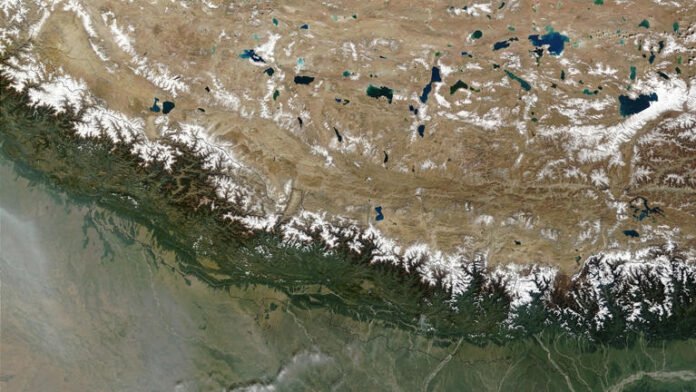New geological research reveals that the Indian tectonic plate is not only moving but also breaking apart beneath the Himalayas. This seismic activity poses serious implications for the densely populated and geologically fragile regions of northern India, Nepal, Bhutan, and parts of China.
The Indian plate, which has been slowly pushing into the Eurasian plate for tens of millions of years, is now showing signs of internal deformation — a phenomenon geologists describe as the plate “tearing” or “cracking” apart under extreme tectonic stress. This could signal a shift in the nature and frequency of earthquakes in the Himalayan region.
A Geological Tug-of-War
The Himalayas — the youngest and tallest mountain range on Earth — owe their existence to the relentless northward movement of the Indian plate, which is colliding with the Eurasian plate at a rate of about 5 centimeters per year. This collision has uplifted massive rock formations over millions of years, giving rise to iconic peaks like Mount Everest and Kanchenjunga.
However, recent studies using satellite-based GPS data and seismic imaging now indicate that the stress of this continued push is not just being absorbed at the surface where the plates meet, but is also causing deep fractures within the Indian plate itself.
Dr. Ramesh Singh, a geophysicist and expert in Himalayan tectonics, explained, “The Indian plate is no longer acting as a single rigid body. Parts of it are bending, warping, and in some zones, even breaking away. This increases the risk of intraplate earthquakes — those that originate within the plate itself rather than at its boundaries.”
Hidden Threats Beneath the Surface
This internal fracturing is particularly worrying because it challenges previous assumptions that earthquakes in the Himalayas only occur at the interface between the Indian and Eurasian plates. Intraplate earthquakes tend to be harder to predict and can strike without the conventional warning signs that occur near plate boundaries.
In 2015, a devastating 7.8-magnitude earthquake in Nepal killed nearly 9,000 people and left thousands injured and homeless. While that event occurred along the plate boundary, future earthquakes may not follow the same pattern if the plate continues to crack internally.
Scientists are now re-evaluating seismic hazard maps of the region. Areas previously considered relatively safe — such as central India or the Himalayan foothills — may now be more vulnerable than earlier thought.
Urban Risks and Policy Challenges
The risk posed by the Indian plate’s internal fractures is not merely academic. Northern India is home to several megacities, including Delhi, Lucknow, and Dehradun, which lie within or close to the seismic influence zone of the Himalayan region. These cities, many of which are already grappling with poor infrastructure and unregulated urban expansion, are ill-equipped to handle major seismic shocks.
Urban planners and disaster management authorities are being urged to update building codes, improve early warning systems, and conduct regular seismic vulnerability assessments of public infrastructure.
“This is a wake-up call,” said Seema Rawat, an urban disaster response expert. “We need to plan for a future where earthquakes are more frequent, less predictable, and potentially more deadly.”
A Call for Regional Cooperation
Given that the Indian plate’s movement affects multiple countries across South Asia, experts are also calling for greater regional cooperation in disaster preparedness and geological research. Sharing real-time seismic data, coordinating emergency response drills, and investing in joint research can save countless lives in the future.
The Indian Meteorological Department (IMD), Geological Survey of India (GSI), and international agencies like the United Nations Office for Disaster Risk Reduction (UNDRR) are working to analyze and disseminate new findings to governments and institutions.
A Landscape in Flux
The Indian plate’s shift and fragmentation beneath the Himalayas is a reminder of the Earth’s ever-changing nature. While mountains may seem eternal, the forces beneath them are constantly in motion. As science peels back the layers of the Earth’s crust, it reveals a reality that demands attention, preparedness, and respect for the dynamic planet we call home.
In the face of geological uncertainty, knowledge and readiness may be our most powerful tools.

